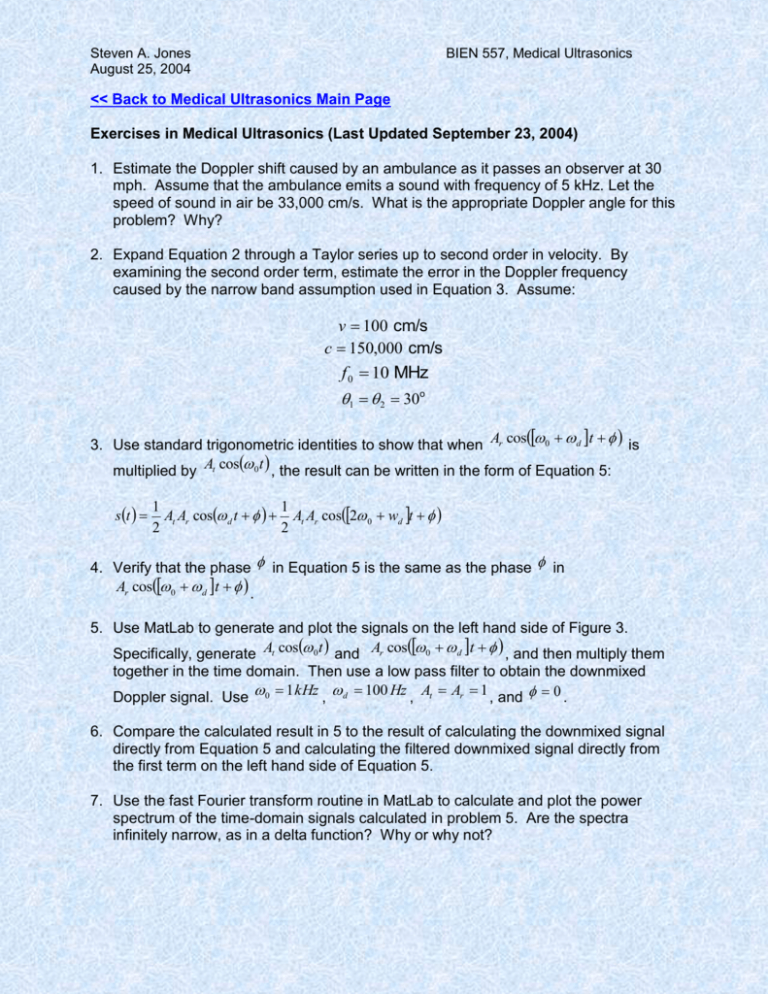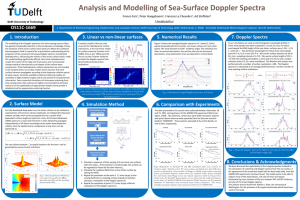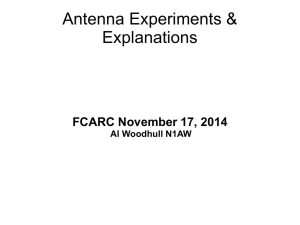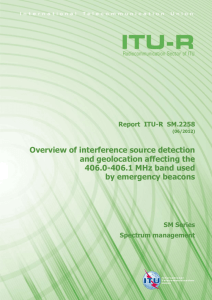Exercises
advertisement

Steven A. Jones August 25, 2004 BIEN 557, Medical Ultrasonics << Back to Medical Ultrasonics Main Page Exercises in Medical Ultrasonics (Last Updated September 23, 2004) 1. Estimate the Doppler shift caused by an ambulance as it passes an observer at 30 mph. Assume that the ambulance emits a sound with frequency of 5 kHz. Let the speed of sound in air be 33,000 cm/s. What is the appropriate Doppler angle for this problem? Why? 2. Expand Equation 2 through a Taylor series up to second order in velocity. By examining the second order term, estimate the error in the Doppler frequency caused by the narrow band assumption used in Equation 3. Assume: v 100 cm/s c 150,000 cm/s f 0 10 MHz 1 2 30o 3. Use standard trigonometric identities to show that when Ar cos 0 d t is multiplied by At cos 0 t , the result can be written in the form of Equation 5: s t 1 1 At Ar cos d t At Ar cos2 0 wd t 2 2 4. Verify that the phase in Equation 5 is the same as the phase in Ar cos 0 d t . 5. Use MatLab to generate and plot the signals on the left hand side of Figure 3. Specifically, generate At cos 0 t and Ar cos 0 d t , and then multiply them together in the time domain. Then use a low pass filter to obtain the downmixed Doppler signal. Use 0 1 kHz , d 100 Hz , At Ar 1 , and 0 . 6. Compare the calculated result in 5 to the result of calculating the downmixed signal directly from Equation 5 and calculating the filtered downmixed signal directly from the first term on the left hand side of Equation 5. 7. Use the fast Fourier transform routine in MatLab to calculate and plot the power spectrum of the time-domain signals calculated in problem 5. Are the spectra infinitely narrow, as in a delta function? Why or why not? Steven A. Jones August 25, 2004 BIEN 557, Medical Ultrasonics 8. Repeat problem 7, but before taking the Fourier transform zero pad the signal to quadruple the number of points. How would you describe the shape of the power spectrum mathematically? 9. If both the Fourier transform of a signal and the downmixing of a signal are linear processes, explain why the power spectrum of a Doppler signal from two simultaneous scatterers is not equal to the sum of the power spectra of the individual scatterers. 10. Use MatLab to generate all of the signals on the left hand side of Figure 5. 11. Use MatLab and the FFT to generate all of the spectra on the right hand side of Figure 5. 12. Use MatLab to generate the three time-domain signals in Figure 6. 13. Use MatLab and the FFT to generate all of the spectra in Figure 6. 14. Show that if the transmitted signal pulse has a Gaussian shape to it and the receiver gate shape is also Gaussian, then the dependence of the amplitude of the signal from a particle within the sample volume on axial location is also Gaussian. 15. Use MatLab to calculate the first moment, mode, and max frequencies of the Doppler spectrum from a continuous wave downmixed signal (as calculated in problem 8). 16. Use MatLab to add random noise to a cosine wave (signal to noise ratio 20 db, i.e. the rms of the noise should be 1/10th of the rms of the cosine). Plot the resulting signal. 17. Calculate the first moment, mode and max frequencies of the signal obtained in 16 above. Compare these frequencies and explain differences, if any. 18. Create a zero crossing detector in MatLab. Apply this detector to the signal generated in 16 above and compare the result to the frequencies obtained in 17. 19. For a typical 10 MHz Doppler device used in carotid diagnosis, with the pulse repetition frequency equal to 32 kHz, calculate the velocity at which aliasing occurs and the spacing between the multiple sample volumes. Steven A. Jones August 25, 2004 BIEN 557, Medical Ultrasonics 20. Give mathematical formulations for each of the parameters G r , ar , t , and v r , t in Equation 9 for the following measurement configuration. The velocity profile is Poiseuille, and the seeding is uniform. Let the beam pattern for the probe be specified as: I r r, c u 1 4 2 a cos 2 J 1 ka sin k a r cos ka sin 2 2 2 2 2 Note: This problem may not be as simple as it appears at first because the coordinate system for the beam pattern is different from the coordinate system for the velocity profile. Your best bet is to rewrite the equation for Poiseuille flow in terms of the coordinate system for the beam pattern. 21. Use MatLab to calculate and plot the beam pattern for the far field of a circular transducer element of a 10 MHz device for the following conditions: a. transducer diameter = 0.5 mm b. transducer diameter = 1 mm c. transducer diameter = 2 mm 22. Derive mathematically the expressions for the spectra in panels a, b and c of Figure 9. 23. Estimate the total scattered power from a single red blood cell. 24. Plot scattered power as a function of scattering angle for a single red blood cell (model the cell as a sphere in this case). 25. Estimate the depth of penetration of a 2 MHz, 5 MHz, 10 MHz and 20 MHz Doppler ultrasound signal. Assume that depth of penetration is defined as the depth at which the sound power is 10% of the transmitted power. Based on this calculation, does the following rule of thumb apply: a. b. c. d. Transcraneal Doppler: 2 MHz Cardiac Doppler: 5 MHz Carotid Doppler: 10 MHz intravascular Doppler: 20 MHz Steven A. Jones August 25, 2004 BIEN 557, Medical Ultrasonics 26. Estimate the percentage of power that penetrates to 1 cm for the 2 MHz, 5 MHz, 10 MHz and 20 MHz ultrasound devices. 27. Plot the scattering/attenuation function f r re as a function of range, and show that it has a peak at some value of r. Determine mathematically the value of r at which the peak occurs. 2 28. Use Equation 14 to simulate a Doppler signal. Assume that N=10, f m 900 Hz , and let the spectrum be Gaussian with a standard deviation of 30 Hz. Simulate 5 seconds worth of data. 29. Use your PC to play back your simulated signal through the sound card. Describe the sound qualitatively. 30. Simulate a pure sine wave at 900 Hz and play it back through the sound card of your computer. Describe the difference between this signal and the one generated through the use of Equation 14. 31. Increase N to 100 in the simulation of problem 28. Describe any qualitative differences between the two signals in terms of both visual appearance when plotted and audio quality when played back through your sound card. 32. Use Equation 15 to generate a signal similar to that of Kitney et al. Compare this visually to the signal generated in problem 31. Play it back through the sound card and compare acoustically to the signal generated in problem 31. 33. Refer to a book on probability and stochastic processes to determine the relationship between Gaussian, Rayleigh distributed, and Chi-Square distributed random variables. Deduce from these relationships that the simulations of equations 14, 16 and 17 are statistically equivalent. 34. Describe several problems that may arise from the presence of the sharp corners in the pseudorandom signal of Figure 15d. 35. Derive Equation 32 for the relationship between the first moment frequency and the signal autocorrelation function. 36. Given Doppler shifts from 3 receivers simultaneously, where the sample volume is at rs , the transmitter is at rt and the receivers are at r1 , r2 , and r3 , derive an expression for the complete velocity vector v within the sample volume.






